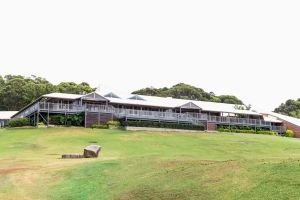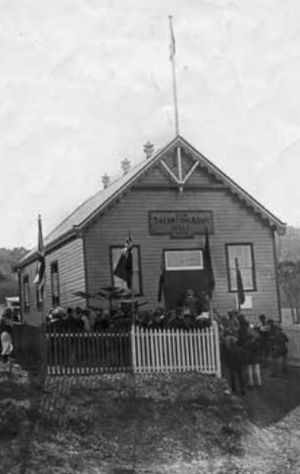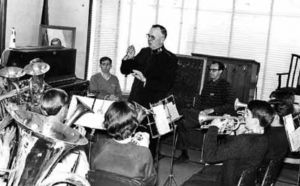The Collaroy story - the campsite develops. Pt 2
.png)
The Collaroy story - the campsite develops. Pt 2
Commissioner Hugh Whatmore (fourth from left) stands with staff at a camp at Collaroy in 1920.
When The Salvation Army came into possession of land around Collaroy and Dee Why, much of it was unusable swamp, and the challenge of maintaining such vast tracts of land was quite burdensome. By 1911, there were only five dwellings in Dee Why with a population of 62, which reflected the Salvation Army’s ownership and use of the land.
 The Collaroy Centre in Sydney today.
The Collaroy Centre in Sydney today.
During 1909, Commissioner James Hay arrived to take over command of the Australasian Territory and decided that the land could provide a valuable resource for The Salvation Army. Consequently, the decision was made to sell off parts of the estate.
Between 1913 and 1928, a number of parcels were subdivided and sold, with the proceeds being evenly divided between the two Australian territories and the Army’s International Headquarters in London. Many contend that Commissioner Hay, through his decision to sell off much of the land, was responsible for the birth of these suburbs. Many streets around the Collaroy area now bear names of noted Salvation Army personalities, including Hay.
The Salvation Army retained a number of parcels of land in the area. The most substantial of these was an allotment in Pittwater Road, Collaroy. This became the site for a Salvation Army youth camp as well as Army welfare and aged care facilities.
 The opening of The Salvation Army hall at Collaroy Park in 1912.
The opening of The Salvation Army hall at Collaroy Park in 1912.
In 1912, The Salvation Army opened new corps buildings at Collaroy Park, Dee Why, and Manly. Outposts and societies were soon operating at Narrabeen and Brookvale. On 23 April 1932, General and Mrs Higgins, while on a tour of Australia, visited the northern beaches area to review Salvation Army property holdings.
Not a great deal is known about early camps on the Collaroy site, but it is believed to be the oldest Christian campsite in Australia, with utilisation of the site dating back to 1906. The first camps were bush camps held under canvas with a minimum of sophistication.
From around 1912, children’s camps commenced at Collaroy, and early camps were, to say the least, rustic affairs. The War Cry of 20 January 1912 reported that: “In the circle of five tents – if we count the cookhouse – stands the dining tent, a lovely new marquee, capable of accommodating, I should think, about a hundred at meals. The five sleeping tents are rigged up with eight bunks, and should necessity arise, 10 can find sleeping room.” Apart from a hearty supply of Uncle Toby’s porridge, the children fared well on “pea-soup and roast lamb, stewed peaches and cool salads”.
Activities for the children were designed to keep their interest and stimulate their thinking. “Each day brought its series of eatings, sleepings, pillow fights, walkings, reading, games, and little concerts.” (The War Cry, 20 January 1912). As the camps developed, canvas accommodation eventually gave way to more permanent structures, which were economic and basic in their design.
Ongoing redevelopment
On 30 July 1985, a proposal was put forward to redevelop the Collaroy campsite as a bicentennial project. A steering committee was set up under the chairmanship of the Australia Eastern Territorial Commander, Commissioner Robert Bath.
 Commissioner Hubert Scotney conducts a youth band at a music camp at Collaroy in the 1960s.
Commissioner Hubert Scotney conducts a youth band at a music camp at Collaroy in the 1960s.
A projected budget of about $4 million was proposed, and a capital appeal to raise almost $1.75 million was established. On 26 May 1988, the world leader of The Salvation Army, Australia’s General Eva Burrows, opened the new complex.
Camps for women have become a regular event at Collaroy, with the first Home League Camp held in 1947. A cost of ₤3 for that first camp proved inadequate, with food running out over the 10-day period. The home league camps were to be replaced by a women’s convention, still held each year.
Camps for young people have also featured heavily on the Collaroy calendar, with annual music camps, now called arts camps, attracting young Salvationists from around the territory. Other youth activities like Sunbeam camps, which commenced in 1954, also provide recreational and spiritual involvement for young people.
Today, The Salvation Army operates the camp, now known simply as The Collaroy Centre, which has become one of the leading Christian campsites in the world. Salvation Army groups, schools, and corporate organisations utilise the centre for a vast range of activities.